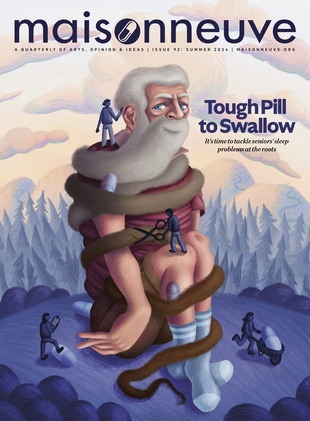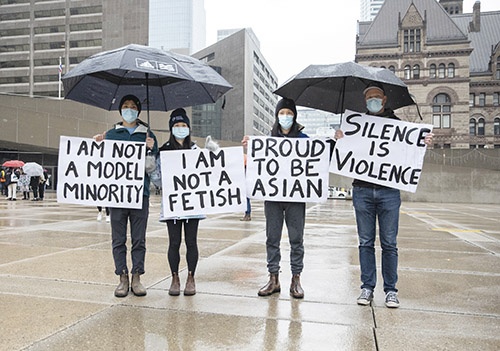 Photograph by Jessica Lee, illustrations by Wenting Li
Photograph by Jessica Lee, illustrations by Wenting Li
Warning Signs
Acts of anti-Asian racism have increased at an alarming rate since the pandemic began. Fiona Tinwei Lam tries to make sense of senseless hate.
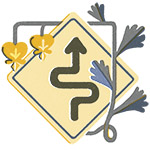
A year into the pandemic, I was still on alert, staying mostly on the side streets when alone, avoiding busy thoroughfares, only heading out for necessary errands. Even in my own neighbourhood in Vancouver’s west side, I’d cross the street upon spotting people walking toward me from a block or more away. Then I’d have to cross back again upon seeing another pedestrian on that side of the street. I’d zigzag my way to destinations as if traversing a minefield. In the grocery store, I would go through a similar dodging and weaving in the aisles.
I was less worried about catching Covid-19 than about the unpredictable reactions from white passersby. If they were wondering whether I was a possible vector for the coronavirus, I was wondering whether they were a possible vector for racism. From the start of the pandemic, Asian Canadians had faced an onslaught of microaggressions and assaults across the country. Recoiling, glaring, shunning, or lashing out with racial slurs, spitting, shoving—or worse. Even ephemeral encounters felt fraught. Like many others, I was apprehensive and tense. I’d heard about Asian Canadians carrying pepper spray when going for a walk or avoiding going out at all.
Knowing that women had reported the majority of these incidents, I’d step a few feet back from the corner when waiting to cross busy intersections to avoid being pushed from behind into traffic. Because of the surge in anti-Asian hate, I’d taken three online training sessions on handling verbal and physical racist assaults and a one-hour online self-defence course, but they didn’t seem enough. I only took evening walks if accompanied by my white partner. Holding his hand tightly, I felt ridiculous and pathetic—a failed feminist who should have studied kickboxing.
When news reports first emerged about the spread of the virus outside of mainland China’s borders and the deliberate racializing of the disease by US President Donald Trump, I feared an open season of hate—a world of blame zeroing in on anyone perceived as Chinese, as if the pandemic had given people a license and justification to target and scapegoat us.
Would non-Chinese Asian Canadians be resentful each time white people mistook them for us? Would we be blamed by those who were disproportionately at risk—seniors in long term care, migrant workers, low-income residents living in overcrowded housing, Indigenous communities, disenfranchised Black people, and others who were marginalized? I envisioned the noxious, unacknowledged caste system in North America closing in on us from the top, bottom and sides with no end in sight.
I had also wondered whether masks would be a trigger for white people’s outbursts of rage and violence and make us a target. While the federal government flip-flopped early on in the pandemic about whether masks were necessary or even helpful, many people of Asian descent in Canada and around the world were wearing them to protect their communities and themselves. Some of my family members were adamant about their necessity. Wearing one, they said, indicated you were a responsible citizen who cared about other people’s health.
But mask-wearing highlighted a cultural disconnect. In the New York Times last spring, Korean American author Cathy Park Hong suggested that “the face mask seemed to implicate foreigners as agents of diseases. The masks depersonalized their faces, making the stereotypically ‘inscrutable’ Asian face even more inscrutable, effacing even their age and gender, while also telegraphing that the Asian wearer was mute and therefore incapable of talking back if aggressed.”
Not wanting to be targeted, I avoided wearing a mask outdoors at first. But if some Asian Canadians wearing masks were perceived as a menace, those of us not wearing them might have been seen as an even greater threat, our every unmasked exhalation polluting pure white air. While I was cycling in the east side of Vancouver last summer, a middle-aged white male pedestrian yelled at me, “Where’s your mask?” After I was a safe distance away, I shouted back, “Where’s your mask?”
The only safe haven seemed to be our homes. But even through closed doors, hate could still flow in through phones, laptops, televisions, even mail slots. I cut out paper hearts and pasted them like talismans against evil all over our door, front windows and mailbox. I emailed the neighbours on the block, offering to pick up groceries. I organized a socially distanced backyard yoga class, serving muffins that I made from apples from our tree to make up for a cancelled block party. I banged away on a hand drum or a pot at 7 PM every night to support front-line health-care workers.
As if paper hearts, home baking and noise-making would prove I was a good Canadian and convince white people not to hate me. I felt like the hummingbird in the famous fable that flew back and forth, bringing water droplets to put out a forest fire.
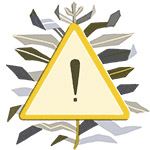
Of course, out-nicing myself didn’t change anything. From March 2020 to February 2021, 1,150 incidents of anti-Asian racism were reported to community organizations in Canada. Of the reported cases, 643 incidents from 2020 were analyzed. The analysis found that 73 percent of cases involved verbal harassment, 11 percent involved physical force, aggression or unwanted physical contact, 10 percent included someone being coughed at or spat on, and 4 percent involved vandalism.
Women reported 59 percent of these cases, and most of the incidents occurred in British Columbia and Ontario. Despite the fact that infection numbers have—at times—been waning in 2021, over 50 percent more incidents of anti-Asian hate were reported in the first five months of this year than during the entirety of 2020.
The anti-Asian blaming is not just “in our heads” or something we should “get over,” and it has gone far beyond microaggressions. Between March 2020 and March 2021, there were 6,603 incidents of anti-Asian hate reported in the US. In Texas, a Burmese father and his young children were stabbed while grocery shopping. In San Francisco, a Thai American senior was shoved and killed while taking his daily walk, and three elderly Asian American women were also stabbed while on the street during the day. In New York, a Filipino American was slashed in the face on the subway, another Filipino American was stomped on and beaten while going to church, and an unemployed Chinese American senior who was collecting bottles was beaten and later put in a medically induced coma.
Life-threatening attacks have occurred in Canada, too. In March 2020, a forty-four-year-old Korean man was stabbed outside of a grocery store in Montreal on the same day the Quebec government announced a widespread shutdown. The Montreal Gazette reported that he spent three days in hospital undergoing surgery and blood transfusions. Last September, in the Quebec municipality of Brossard, a driver was charged with deliberately driving into a cyclist and then, on another street, a pedestrian. Both victims were of Asian descent, and both died of their injuries.
Between 2019 and 2020, my hometown of Vancouver experienced a 717 percent increase in anti-Asian hate crimes reported to the police. In 2020, ninety-eight cases were reported to authorities, more than the total number of cases reported in the ten most populous US cities. Many headlines started calling Vancouver the “anti-Asian hate crime capital of North America.” Community workers say that these reports may only represent a fraction of actual incidents, given victims’ reluctance to come forward, cultural norms, language barriers and other impediments to reporting.
Considering the rising number of these incidents, it seemed inevitable that someone I knew would get assaulted. Pat Rose, the ebullient third-generation Japanese Canadian who was running the University of British Columbia’s creative writing department office when I was a student, retired four years ago after working there for nearly three decades. In March 2021, she was taking an afternoon walk in her West End neighbourhood. Wearing a toque and a glittery pink mask, she took a selfie next to a blossoming tree as her husband strolled ahead. Suddenly, a white man shouted, “Hey, I wanna ask you something!” before shoving her to the ground. He only fled when her screams caught the attention of bystanders. Witnesses later told her that the attacker was wielding a golf club.
Analyzing what assailants say during racist assaults can be revealing. In Vancouver, one month into the first lockdown, a man shouted, “You people are why my daughter is sick!” at a young visible minority woman on the SkyTrain. He allegedly punched her and grabbed her hair, slamming her face into the seats before shoving her out of the train when it arrived at Burrard Station downtown.
The blaming of Asian Canadians as “other,” distinct from the communal “we” or “us,” signaled by the accusatory use of “you” is clear: “You Asians brought this virus to Canada,” “You are the cause of the virus,” “You’re the reason I have to wear this f---ing thing,” “The whole world is dying because of you f----ing idiots,” “I don’t want your disease,” “Every day, I pray that you people die.”
This othering has persisted throughout the pandemic, underlining the attitude that Asian Canadians don’t belong here. We’ve been seen through the single lens of perceived race and linked to a single city, market or lab in China to which few of us have any connection. Or we’ve been suspected of being pawns or agents of an authoritarian global power. It’s as if we are living through a nightmarish manifestation of Edward Said’s influential cultural critique, Orientalism, which analyzed the insidious and negative depictions of “the Orient” by the West. Rooted in the white supremacist ideology embedded in Canada’s colonial past, the distorted, inaccurate tropes of Asians as “dirty,” “diseased,” “a continual menace to health” and “the Yellow Peril” have reemerged, perhaps because they never went away.
Despite the prevailing stereotypes, Richmond, a municipality just south of Vancouver where 54 percent of residents identify as Chinese, has about half the infection rate of Canada and just over half of that of Vancouver.Infectious disease doctors have attributed this to the fact that Chinese residents were proactive when it came to protecting themselves and one another, donning face masks and maintaining their social distance before such measures were mandated.
Chinese communities in other parts of the world also defied racist stereotypes. The Italian city of Prato, where about 10 percent of the population is Chinese, had almost half the average infection rate of Italy due to the early adoption of strict isolation and sanitary measures by the town’s Chinese community, which alerted the rest of the town to start implementing health measures. Yet the conflation of the coronavirus with people of Chinese or Asian descent has persisted around the globe.

Advice from journalist Eternity Martis in her memoir, They Said This Would Be Fun: Race, Campus Life, and Growing Up, brought back memories of attending law school at Queen’s University in Kingston, Ontario in the late 1980s: “When white kids refuse to make room for you on the sidewalk, do not step off. Jim Crow South etiquette is over,” she writes. In those days, I’d force myself to stay on the sidewalk when groups of white or male students were approaching, although of course I’d shift to the side. Sometimes students would move and sometimes they wouldn’t, as if I were invisible. Often, they’d move when they were just about to collide with me, seemingly unconscious of the space they were claiming as their own.
Earlier in the pandemic, though, when white seniors were approaching, I automatically stepped off the sidewalk onto the grassy boulevards, even off of the curb if I was unable to cross to the other side of the street. During lowered case counts and lifted restrictions last spring, I started claiming my portion of the sidewalk again. But I’ve found myself having to make a conscious effort to do so. I hadn’t realized how accustomed I’d become to deferring to white people, as if they had a greater right to public space.
My friend and colleague, Vancouver-born author Evelyn Lau, lives in the heart of downtown in between Yaletown and the West End. A few times during her daily walks, white senior citizens have rudely barked at her on the street to “Walk over there!” gesturing for her to walk at a distance. Some have even ordered her to “Wear a mask!” while outdoors, singling her out among many maskless pedestrians. They probably didn’t realize that they were addressing the former poet laureate of Vancouver.
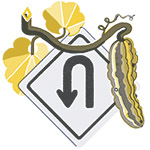
“Go back to where you came from!” and “Go back to China!” These lines have been hurled at Asian Canadians despite the diversity of our diasporic communities. Canadian birth, citizenship and long-time residency have provided no immunity. While waiting for her food order outside of a restaurant in Toronto, ER nurse Katherine Cheung experienced a confrontation with a woman on the street: “She told me to go back to wherever I came from and called me racial slurs,” she told CTV News. “Then she came very close to my face and purposely spit on me.”
Tina J. Park is a foreign policy expert who immigrated to Canada at a young age from South Korea. In an article for Policy Options, she described racist acts such as being yelled at, verbally harassed or denied service about a dozen times in Ottawa during the first year of the pandemic. “Despite working as a human rights advocate for the past decade, I found myself completely helpless when an angry stranger at the grocery store suddenly told me to get out, yelling “Go back to China.”
In Richmond, the CBC reported that two men sitting in a car yelled, “Hey you! You f---king ch---k ... go back to your country!” at a woman and her mother, who had immigrated to Canada more than twenty-five years ago. APTN reported that a stranger at a downtown Montreal metro station allegedly mistook a woman from Kuujjuaq, Nunavik for being Chinese, spat at the ground and told her to leave the country.
The stereotype of the “perpetual foreigner” underlies the call for people of Asian descent to “go back,” which is just another way to say “we don’t want you here” and “you don’t belong in this country.” Or perhaps the desire to deport us forthwith relates to the original origins of “scapegoat.” The ritual is often traced back to Christian and Jewish texts, in which priests would choose a goat at random to be cast into the wilderness to carry away the transgressions and impurities of the community.
The desire for the removal of Asian Canadians also recalls the forced relocation and internment of about twenty-two thousand Japanese Canadians (most of whom were Canadian-born) during World War II. Their assets were seized and sold in the name of national security. After the war, Prime Minister Mackenzie King’s government issued orders to deport roughly ten thousand Japanese Canadians who were deemed to have consented to “voluntary” repatriation to Japan because of their refusal to resettle east of the Rockies. Despite protests, almost four thousand people were deported. It wasn’t until 1949 that wartime restrictions were lifted, allowing Japanese Canadians to travel freely within Canada and return to BC.
And, of course, it’s painfully ironic that people who are descended from settlers or are immigrants themselves are demanding that others “go back,” as if anyone who is non-Indigenous could possess an exclusive claim to Indigenous land. The phrase is a blanket denial and erasure of over a century of this country’s intertwined history with generations of people of Asian descent who have chosen Canada as their home.
So how can people of actual or perceived Asian descent best respond? During an online panel on anti-Asian hate, Jan Wong, former journalist with the Globe and Mail and co-founder of the Asian Canadian Women’s Alliance, brought up the importance of being prepared. “If someone says something...I’ve got my line ready. I’m practicing in front of the mirror.” Wong had honed a succinct retort: “F--- you, Adolf!” (She had decided “Hitler” was too simplistic.) What spunk!
Knowing that I’d be too nonplussed and stunned to whip out an effective extemporaneous rejoinder, I’ve been mulling over my own Handy Retorts to Have When Faced with a Racist over the past year. “You don’t know anything about me!” although true might provoke a spiral of escalating insults. “Are you a settler, too?” might perplex, but make a point. “Smallpox!” would probably just confound, since racists would be oblivious to the decimation of Indigenous communities by the infectious disease brought by white colonizers.
“Mais je suis Canadienne!” could incite a verbal barrage of racial slurs in French. A silly touch of Mary Poppins might deflect hostility: “Supercalifragilisticexpialidocious!” Or I could try out my best imitation of a Dolly Parton-inspired southern twang: “May God forgive your hate-filled heart!” or even sing the national anthem in either official language. But borrowing from Jan Wong’s approach with a cheery and pithy “Hello, Adolf!” might well suffice.
There’d be no time to explain to accusers wishing to send me into exile that I can’t “go back to China,” just as they probably can’t “go back” to their ancestral country of origin. When I was eighteen, I went on my first trip to China with my family and was treated like an oddity. White foreigners were respected there, but because I looked Chinese yet couldn’t speak the language, I was “hollow bamboo” or jook-sing, disconnected from either culture. And how about the 25.7 percent of me that is Vietnamese? What quarter of me should be sent there? I have lived here for over half a century. There will never be any “going back” for me.

If my family had arrived in British Columbia 150 years ago, we would have come to a province where the majority of residents were non-white. In 1871, the year BC joined Confederation, there were an estimated 25,660 Indigenous residents, 1,500 Chinese residents, 500 Black residents, and 8,500 white residents. Over the following decades, a white minority became a white majority as a result of the dispossession of Indigenous land, the Indian Residential School system, and exclusionary and restrictive immigration laws, combined with aggressive settlement policies to bring in European and US settlers.
In the 1880s, approximately fifteen thousand Chinese workers were brought in to build the western segment of the Canadian Pacific Railway to link British Columbia to the rest of the country. Paid about half the wages of white workers, they were assigned the most difficult and dangerous tasks, such as handling explosives. More than six hundred workers lost their lives.
When Chinese workers were no longer wanted after the completion of the national railroad, the federal government tried to discourage immigration by passing head tax legislation on Chinese migrants in 1885, 1900 and 1903. In the beginning, the fee was $50, and it was later raised to $100 and then $500.
Continuing calls for a “White Canada” by politicians and workers led to the infamous 1907 anti-Asian riots in Vancouver. A mob of thousands incited by members of the Asiatic Exclusion League (of which the mayor and city councillors were founding members) marched into Chinatown and Japantown, smashing windows of businesses and homes. Eventually, the federal government passed the Chinese Exclusion Act that barred virtually all Chinese immigration from 1923 until 1947.
In the early 1900s, there were policies segregating public pools, restaurants, movie theatres, hospitals and cemeteries in Vancouver. Certain non-white communities were prevented from renting or owning properties in specified residential areas. Restrictive covenants on land titles in Vancouver barred the sale, ownership and occupation of certain properties to those of Chinese, Japanese, Indian and African descent or any other “Asiatic race.”
Entry to various professions such as medicine, law and pharmacy was dependent on being on provincial voter lists. The BC legislature had disenfranchised Chinese and Indigenous peoples in 1872 and Japanese people in 1895. Eventually, the provincial and federal governments granted the franchise to those of Asian descent in the late 1940s.
By 1968, when my family arrived in Canada from Scotland, few of these overt government policies of discrimination and segregation were still in place, except for the remaining restrictive covenants on land titles, which were not declared void until the BC government amended the Land Title Act in 1978. Canada’s immigration policies and legislation had gradually shifted toward criteria that emphasized skills, training and education, leaving behind restrictions on the basis of origin.
We were welcomed by relatives in Vancouver who’d emigrated from Hong Kong years before. After living in an apartment in South Granville, we moved to a 1940s stucco house near Oak Street, and then, a few years later, to a single-storey house in south Vancouver. The white woman next door was suspicious of us and prickly. When her cat wandered off, she came to our house to ask if we’d seen it. “You haven’t eaten it, have you?” she said as a kind of joke.
My mother was taken aback and brought up the incident for months afterward, shaking her head. I was puzzled too—it was my first encounter with the stereotype about Chinese people eating weird food, a comment that would eerily echo recent media attention on the possible relationship between the emergence of Covid-19 and the eating of wildlife in parts of mainland China.
Then our neighbourhood changed. In the 1980s and nineties, the bungalows came down, replaced by boxy, two-storey pink stucco houses as people from Hong Kong fled in advance of the 1997 handover to mainland China. The federal government set up investor immigrant and entrepreneurial immigrant programs to attract rich newcomers. But just as the Chinese migrant workers who were solicited over a century ago were unfairly blamed by white labour for undercutting wages, the wealthy newcomers solicited by the federal government were blamed by white residents for a variety of ills.
Similar to the rhetoric heard today, there were complaints about ESL students in public schools, rising house prices and astronaut families not paying their fair share of taxes. The same anti-Asian beliefs, rhetoric and scapegoating would keep recurring, shifting only ever so slightly depending on the political climate, and provide fertile ground for the rise in anti-Asian hate during the pandemic.
Over the decades, our family’s weekly visits to Chinatown, the historic centre of early East Asian immigration to Vancouver, became less frequent with the evolution and growth of local Asian Canadian communities throughout the city. In the past year and a half, we’ve rarely visited except to quell occasional cravings for steamed buns and sticky rice at one of the neighbourhood’s well-known bakeries.
But even this historic enclave has come under attack during the pandemic. The stone lions at the Millennium Gate at the entrance to Chinatown were defaced twice. The Chinese Cultural Centre was vandalized with racist graffiti advocating for the killing of Chinese people, and its windows were smashed in. The message was clear: anything Asian could be a target for hate.
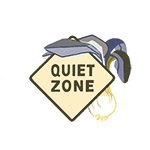
My friend, author and playwright Loretta Seto, was standing in line outside an East Vancouver drug store on one of the designated spots marked on the sidewalk. It was her first time running errands on her own since the birth of her baby four and a half months before. She politely asked a maskless white woman in her fifties who was standing within two feet from her to please step back. The woman sneered, “You’re asking me to be careful? You people are the ones who brought this here!”
A shouting match ensued, with the white woman yelling that she couldn’t be a racist because her daughter “was dating a brown man.” They argued heatedly on their way into the store before going their separate ways. Seto told me, “I want to make it loud and clear that people shouldn’t assume Asian Canadians are going to be these quiet minorities who allow racist, offensive comments to go unanswered.”
Some Asian Canadians seem to feel that racism against them is normal, or that they have no right to complain. A Chinese Canadian activist told the Tyee that her mother went to a store where a fellow shopper hurled racist slurs at her. The activist remarked that “she didn’t even see it as racism,” adding that her mother felt the slurs were part of the experience of being Asian Canadian.
Richmond-born Bryan Chiu, a former Canadian Football League coach and player, has said: “Growing up we’ve been taught to be seen and not heard. If you really think about that, being seen and not heard, we are the perfect minority for any racist people… You abuse us, we’ll just quietly walk away. We don’t want to cause a disturbance.” Seniors who have been assaulted have often been too frightened to file reports. Language barriers factor into this hesitation, as do concerns about retaliation and beliefs that police involvement won’t change much.
And it’s not just victims who are silent. Shannon Pang told News 1130 that she was pushed down concrete stairs by a young white man at the Richmond-Brighouse SkyTrain Station. “Then the guy just walked past me, like I was nothing…There were so many people around me who saw what happened and not even one person asked me if I was okay, or even offered to help me up.” Bystanders have failed to intervene during a number of similar incidents involving women transit riders who are of Asian descent or Muslim in Vancouver. Perhaps this is part of the reason they are targeted; given bystanders’ apparent indifference, assailants may feel they can attack with impunity.
One reported incident demonstrates how bystanders can become supporters, and turn a traumatic incident into an affirming one. Student Tina Hoang told the Toronto Star about being assailed by a white man who ranted about masks, “the f---ing Chinese virus” and “Chinese people eating “s---” when she boarded a Vancouver bus one morning after classes. An older Latina woman and a Southeast Asian woman lectured the man about mask-wearing, while a few other passengers said “Don’t be racist.” Some changed seats to stand or sit protectively around Hoang after she burst into tears. When the man uttered more expletives before she disembarked, she calmly responded, “I hope you can find inner peace.”
Hoang related how when her family lived in a predominately white suburb, “people belittled my mother for not speaking English correctly, and white men hit on her. I couldn’t believe my mother had to stand up for her rights, and I still have to do it now.” But the other passengers’ support made her feel hopeful for the future. “Canada has systemic racism, but people are willing to stand up for change and that makes me proud to be Canadian.”
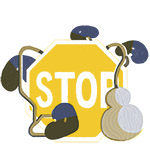
The alarming surge of anti-Asian hate during the pandemic has galvanized Asian Canadian communities. People have been speaking up, filing reports, attending rallies and reaching out to forge essential alliances with others across cultural and socio-economic divides in order to make our streets safe for everyone.
Project 1907, a grassroots group named after the year of Vancouver’s anti-Asian riots, joined forces with the Vancouver Asian Film Festival to create the Elimin8Hate campaign and gather reports from the public about anti-Asian racism. Community groups also worked together to create Fight Covid Racism, an online platform for reporting incidents of anti-Asian racism.
In March, rallies against anti-Asian racism were held across Canada after six women of Asian descent at three different spas in Georgia were shot and killed, along with two others, by a young white man who wanted to eliminate “temptation” for his sex addiction. Other small, socially distanced rallies were organized this spring by the Stand With Asians Coalition across the Lower Mainland and Canada. Co-founder Doris Mah successfully lobbied the mayor of her city of Burnaby to proclaim a day of action against anti-Asian racism, and then she reached out to more than one thousand municipalities across the country. Dozens responded positively, including Vancouver, Victoria and other major urban centres outside of BC.
Angela Leong, a racial trauma counsellor and founder of the Movement For Asian Lives, organized a march of about fifty people from Chinatown to the city’s harbourfront in May to take a stand against scapegoating and anti-Asian hate. “It felt very emotional,” she says. “It was now or never. I had to do it for myself and for my family.” In her moving speech at the rally, she talked about Asian Canadians who are scared to leave their homes, stressed in public spaces and frightened for their children.
“I’m heartbroken by all the individuals that I see that have chosen to stay silent about the racism that they experience at school, in the workplace and in public.The truth is we’re not just fighting an [anti-]Asian hate battle. We’re also fighting for our Black and Indigenous brothers and sisters. We’re fighting for the BIPOC community to be heard. And if we minimize our pain, we’re minimizing the pain for other minorities.” She called for Asian Canadians to stop sweeping racism under the rug, and to wake up to the deep harm it causes.
It is heartening to know that the BC government has been actively undertaking steps to address the rise in hate. It is currently developing a province-wide 24/7 multilingual hotline to offer counselling support and information about filing police or human rights complaints to callers who have experienced or witnessed hate-motivated incidents. In order to encourage people to come forward to use the service, it will not be staffed by police.
Most recently, the BC Human Rights Commissioner Kasari Govender announced that she would be conducting a public inquiry to examine the root causes of the rise in hate incidents during the pandemic and analyze how to best address, eliminate and prevent them.
The provincial government has also provided grants for anti-racism projects and launched an anti-racism public information campaign. This August, it began public consultations about legislation that would allow race-based data to be collected in order to identify systemic gaps and barriers experienced by diverse communities in health care, policing, education and other public services. It has also met with community partners about anti-racism legislation that will be introduced in the fall of 2022 or spring of 2023 to address matters of discrimination and hatred in the province that aren’t covered by existing legislation.
Many of the hate incidents over the past year and a half have been fleeting, sudden, unpredictable—yet indelible for their viciousness and cruelty. Hate-motivated crimes are usually prosecuted as general offences under the Criminal Code, such as assault, uttering threats, and mischief. The Code allows for tougher sentences when there is evidence of hateful motivation. The specific hate crime provisions in the Criminal Code deal with advocating genocide, publicly inciting hatred that will likely lead to public disorder, and wilfully promoting hatred, and are prosecuted much less frequently. New federal legal remedies to address online hate are in the works as well. But in the meantime, only one hate crime charge was approved for prosecution by the BC Prosecution Service in 2020, with another two approved so far this year.
The Vancouver Police Department closed over a hundred investigations last year due to running into dead-ends. Even when victims come forward, evidence is gathered, and suspects are identified and located, the proverbial wheels of justice turn slowly. It took four months for the police to charge a white man for the assault of a ninety-two-year-old man with dementia in an East Vancouver convenience store after it was caught on video in March last year. It took a year-long investigation to charge a masked white perpetrator for spray-painting threatening racist graffiti on the windows of the Chinese Cultural Centre.
Yet it is essential for anyone targeted by hate to speak out and be heard, and be supported to do so. The history and legacy of racism in Canada must be taught in schools and universities. We need bystanders to step up to become witnesses and most importantly, allies. We must reach out in solidarity with those across the country who have been targeted by hate or have worked to end it, and join them in putting a stop to it.
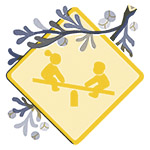
Most incidents of anti-Asian hate have occurred while ordinary people were doing ordinary things. Taking public transit, walking on the sidewalk, buying groceries, parking a car, attending classes, ordering food in a restaurant, taking out the garbage—or spending time in a park.
Last May, Dakota Homes, a young Indigenous woman, was walking her dog in a park in East Vancouver. When she sneezed due to seasonal allergies, she says a man attacked her, repeatedly punching her in the face until she fell on the ground while he shouted anti-Asian slurs. That same month, a fifteen-year-old was riding his bike through a park in Saskatoon when a man started to curse and yell racist epithets at him, accusing him of spreading the coronavirus. The man ran over and pushed the teen off the bike and to the ground, then started punching him in the head.
Because of these and other racist incidents in parks, I was leery about practicing tai chi alone in a public space where I’d be an easy target. I wanted to protect the precious sliver of Chinese culture that I’d cultivated for over fifteen years from the taint of hate. The tai chi fan course I was attending at a community centre had been cancelled early on during the pandemic. I asked Amy, a white classmate who lived nearby, to practice with me at Douglas Park in midtown Vancouver.
Years ago, the place had been an oasis where I could rest for an hour or two as a tired single mom while my kid romped in the playground. It also had a connection to early Chinese immigrants and to BC’s Black history. Starting in the early 1900s, the area had been a Chinese market garden growing fresh produce for the city. In 1926, it became a park named after James Douglas, the first governor of the Colony of British Columbia and the mixed-race founder of a historic settlement of Black pioneers on the west coast.
How relieved I felt when my tai chi buddy arrived. How good it felt to be moving in harmony and safety with a friend under the old maple trees. We swayed, high-kicked, lunged and spiralled in tandem, carving and scooping the summer air, our fans rippling open and snapping shut, claiming space.
One morning while we were practicing, a middle-aged white woman made a beeline toward us from across the street. After months of zigzagging, I felt pinned. I made myself stand my ground, bracing myself for an altercation. But there wasn’t one. She told us that she and an elderly family member had been watching us from the top floor window of their home, admiring our movements. “Is it okay that we took a few photos?” she asked. Smiling in surprise, we agreed that it was fine. After all the months of apprehension and dread, here was a rare—if brief—moment of acceptance.
Fiona Tinwei Lam has authored three poetry collections and a children’s book, and collaborated on poetry videos that have screened internationally. Shortlisted for the City of Vancouver Book Award and thrice selected for BC’s Poetry in Transit, her work appears in over forty anthologies, including Best Canadian Poetry.




